This post may contain affiliate links. I only recommend products or services that I personally use or trust, promise!

Bibimbap is one of my absolute favorite Korean comfort foods. It’s a bowl of rice topped with individually prepped vegetables, sometimes meat, a spicy gochujang sauce, and a fried egg.
“Bibim” means mixed and “bap” means rice. It is traditionally made with vegetables, raw beef, and raw egg, but there are tons of variations depending on your preference. Today I am making a very common version with cooked beef and a fried egg.
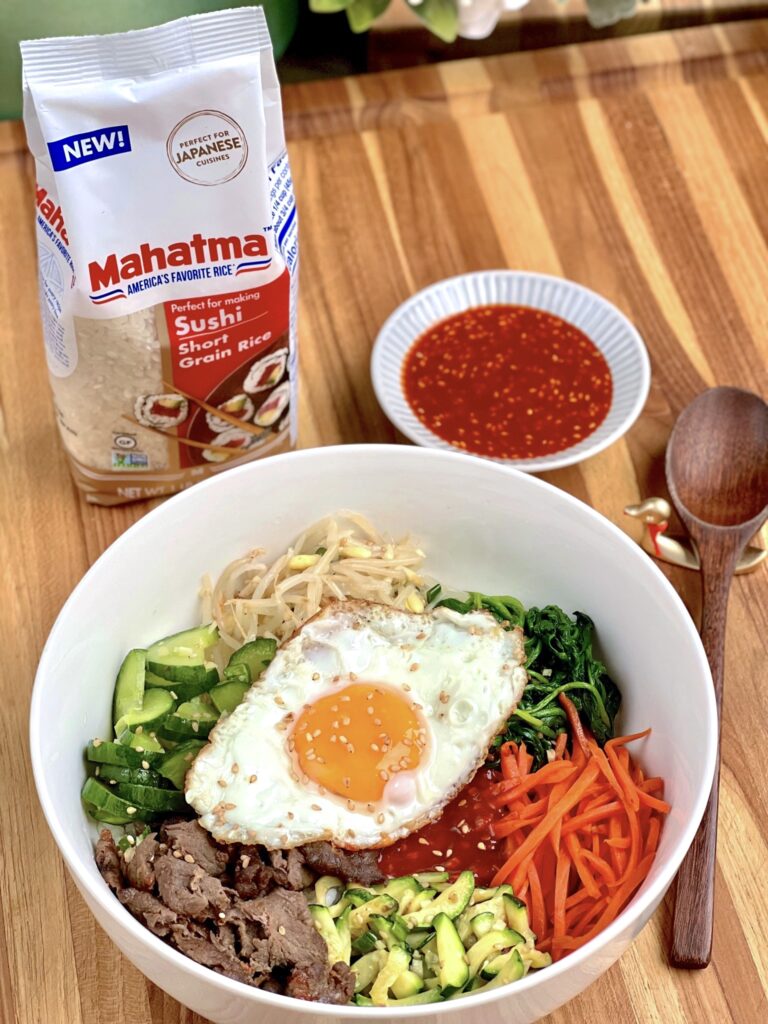
Since the assorted vegetables are individually prepped for bibimbap, it can seem like a lot of work and steps to make this dish. Although each ingredient needs special care to make everything come together, it’s really easy and not all that much work once you learn how to manage your time in the kitchen.
It is also important to note that most Korean homes often make bibimbap using leftover side dishes (banchan). I myself rarely make bibimbap using freshly made veggie side dishes- bibimbap is usually a dish I make to clean out the fridge using leftover banchan that needs to be eaten before spoiling.
That being said, if this seems like too much prep work to you, you can cut it down by only using 2-3 vegetables instead of the 5 that I am using. It will still be delicious!
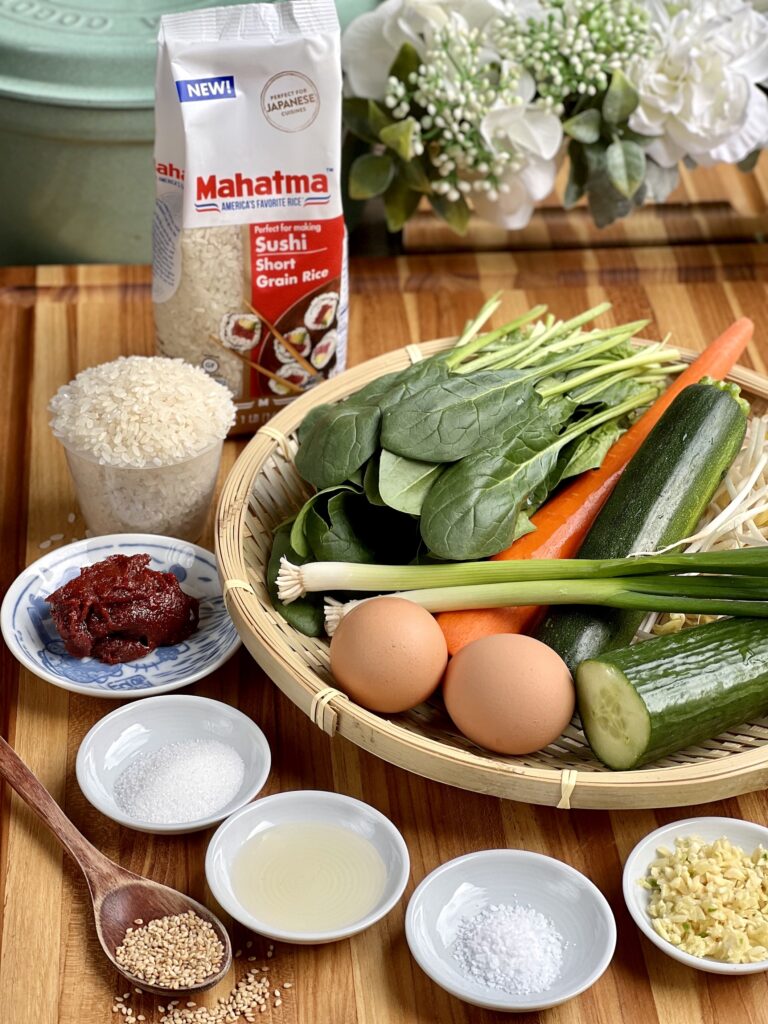
Ingredients:
- Rice- bibimbap is best when made with freshly made rice. Short grain rice is traditionally used in all Korean cooking.
- Bibimbap sauce– Bibimbap is traditionally made with just gochujang, but I prefer the more modern sweet & tangy gochujang sauce. For this recipe you will need gochujang, sugar, sesame oil, garlic, rice vinegar, & sesame seeds.
- Vegetables– there really aren’t any rules to what kind of vegetables you can use in bibimbap. I’m using the most common ones- spinach, bean sprouts, zucchini, cucumber, and carrots.
- Beef- I prefer bibimbap with the traditional raw beef, but today I am cooking it since that’s how most places make it now. It’s seasoned in a sweet soy sauce marinade. You can also omit the beef and prepare this portion of the recipe with mushrooms instead for a vegetarian option!
- Fried egg- bibimbap is always topped with an egg- either fried or just the raw egg yolk. The creamy egg yolk is a nice finishing touch when mixing everything together! Note: this entire dish can be vegan if you omit the egg and beef. It will still pack a ton of flavor!
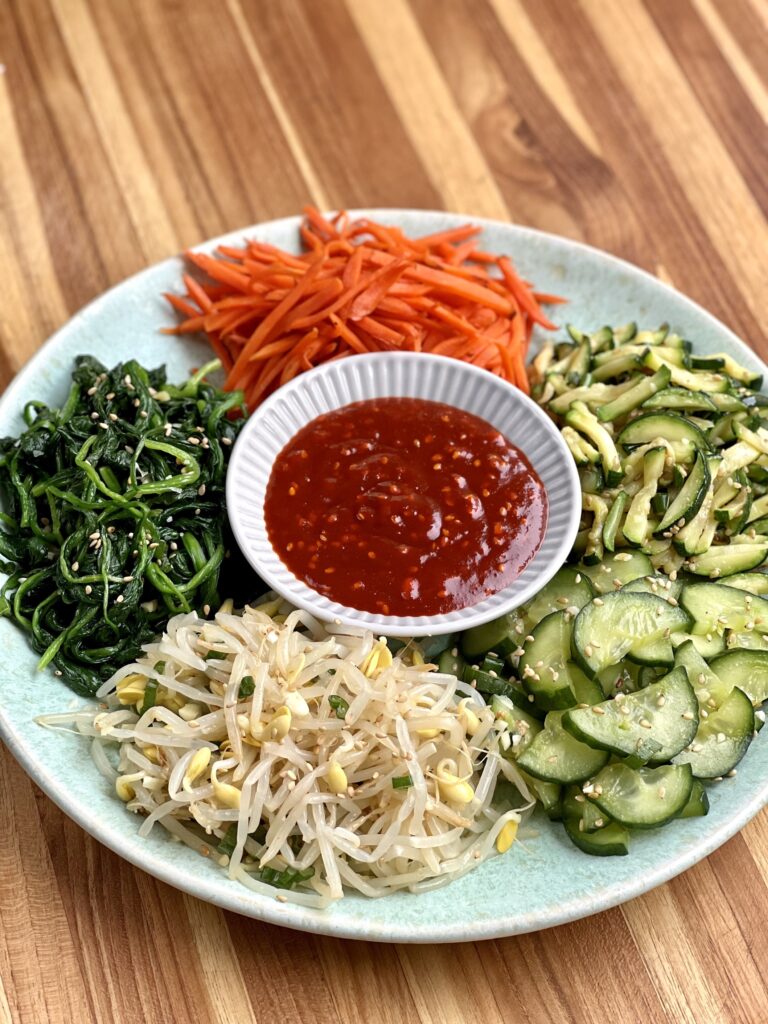
Prepping the veggies
Prepping the veggies can seem like a daunting task since they need to be individually prepped. Giving each vegetable special attention in preparation is really the key to making the best bibimbap. This is also true for japchae. It’s a lot of work, but in the end it really makes a difference in the taste.
I am going to try to simplify the veggie prepping process as much in the instructions. I also want to note that these veggies can be prepped a few days ahead to save you some time in the kitchen when you want to have bibimbap later.
- Veggies that need to be blanched:
- Bean sprouts
- Spinach
- Veggies that need to be salted to draw out moisture:
- Carrots
- Zucchini
- Cucumber
- Veggies that need to be pan fried:
- Carrots
- Zucchini
Each of these veggies will need to be individually seasoned, and they are all pretty similar.
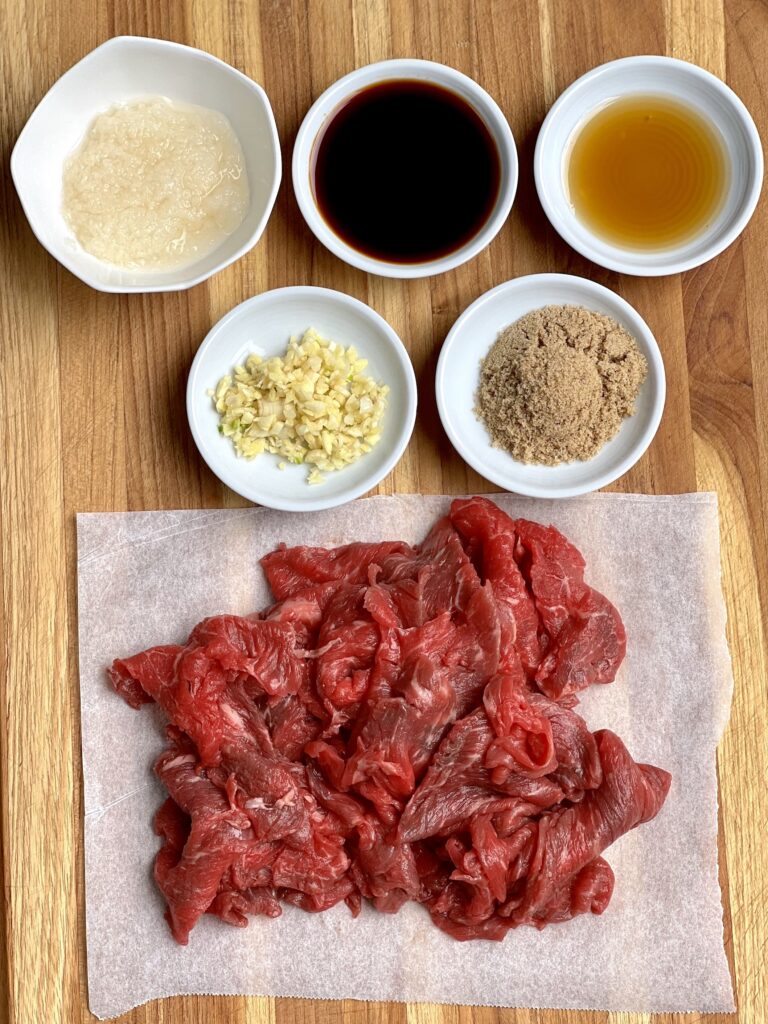
Prepping the beef:
I’m using a very simplified bulgogi marinade to make the beef for bibimbap: soy sauce, brown sugar, garlic, sesame oil, and grated Asian pear. Marinate for at least 30 minutes. You can opt for a leaner cut of beef if you are trying to eat healthier, but I always recommend a cut with a bit of fat in it for tenderness and flavor.
If you’re a vegetarian or vegan, you can use this same marinade on any type of mushroom you like and pan fry it just like you would the beef.
Meal Prepping:
Bibimbap is also a great dish to make in bulk for meal prepping. You can just quadruple the ingredients for the banchan (vegetables) and keep them in the refrigerator for up to 4 days to make 4 meals.
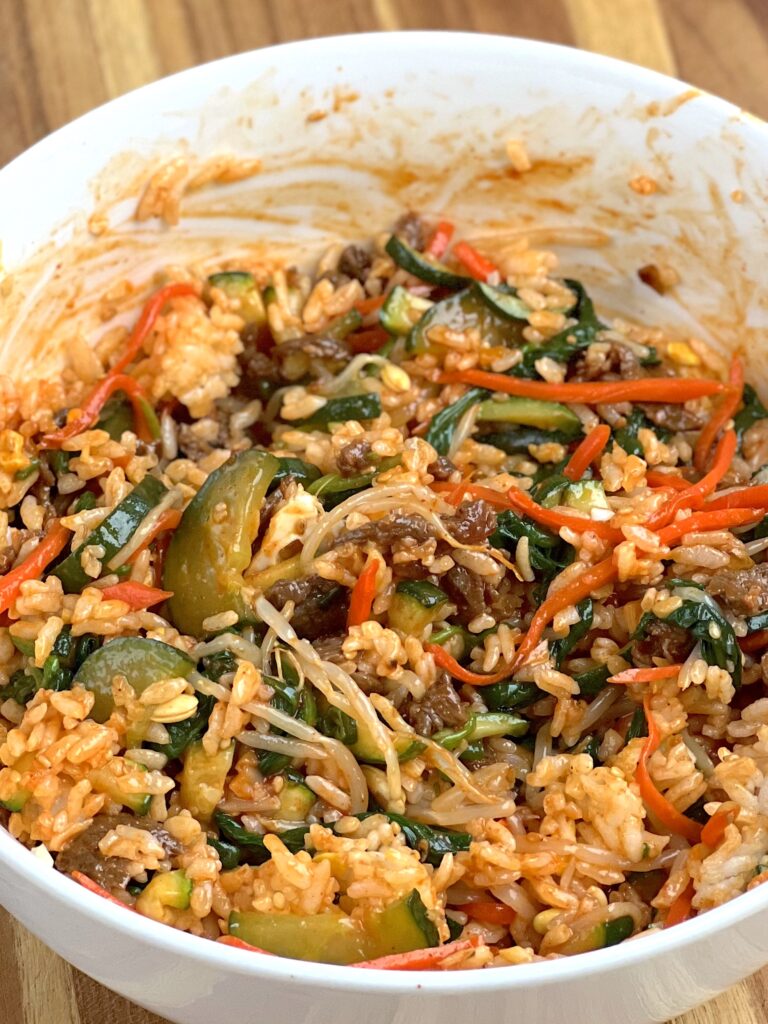
This recipe is kindly sponsored by Mahatma® Rice. I carry their products in my kitchen at all times!
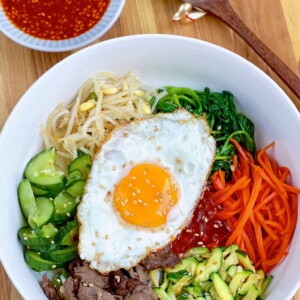
Bibimbap (Korean Mixed Rice & Veggie Bowl)
Ingredients
- 1 cup short grain rice, makes about 3 cups of cooked rice
- 2 fried eggs
Bibimbap Sauce:
- 2 tbsp gochujang, (Korean red pepper paste)
- 1 tbsp sugar
- 1 tbsp sesame oil
- 1 tbsp water
- 1 tsp rice vinegar
- 1 tsp sesame seeds
- 1 tsp minced garlic
Vegetables
- 4 oz spinach
- 4 oz soybean sprouts
- 4 oz carrot, julienned
- 4 oz Persian or English cucumber, thinly sliced and cut in half
- 4 oz zucchini , cut into matchsticks
- 2 tsp minced garlic
- 2 green onions, chopped
- 2 tsp sesame oil
- 1 tsp sesame seeds
- salt
Beef
- 1/2 lb thinly sliced ribeye , or mushrooms for vegetarian
- 2 tbsp soy sauce
- 2 tbsp brown sugar
- 2 tsp sesame oil
- 1 tsp minced garlic
- 1 tbsp grated Asian pear
Instructions
Make the rice:
- Wash 1 cup of short grain rice until the water runs clear. Add enough water so that when you lay your hand flat on top of the rice, your knuckles are just fully submerged. Let it sit for 30 minutes.
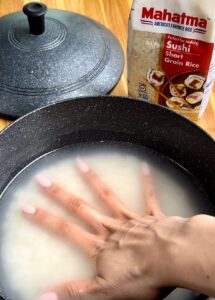
- Cover the pot and cook over medium low heat for 18 minutes. After 18 minutes, turn off the heat and fluff the rice to release steam. Then keep it covered until you need it.
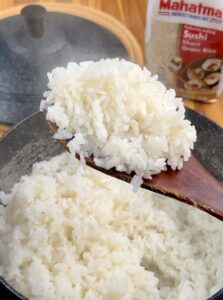
- Mix all the beef ingredients together and marinate in the refrigerator for at least 30 minutes.
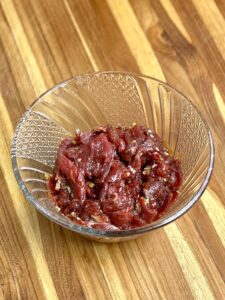
- Mix the bibimbap sauce ingredients together and set aside.
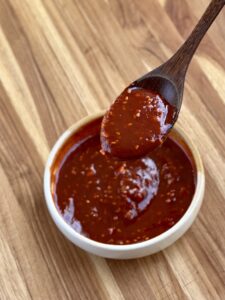
- Add 1/4 tsp salt to the zucchini, 1/4 tsp salt to the cucumbers, and 1/8 tsp salt to the carrots. Toss well to coat, then let it sit for 10 minutes to draw out water while you prep the other veggies.
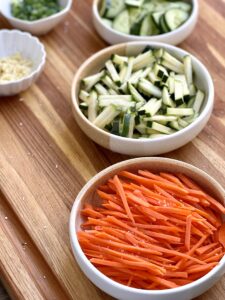
Spinach
- Wash the spinach then blanch in boiling water for 20 seconds.
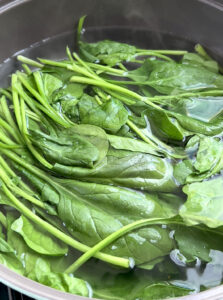
- Immediately shock in cold water to stop the cooking, the squeeze out all the moisture and cut the spinach ball in half.

- Season with 1/2 tsp minced garlic, 1/2 tsp sesame oil, a pinch of salt, and 1 tsp chopped green onion. Mix well then set aside.
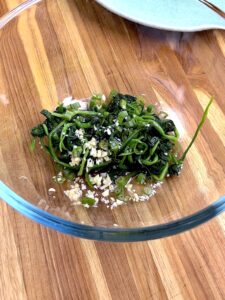
Bean sprouts
- Wash the bean sprouts, discarding any browned pieces. Blanch in boiling water, covered on medium heat for 3 to 4 minutes, then shock in cold water.
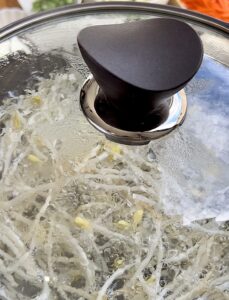
- Season with 1/2 tsp minced garlic, 1/2 tsp sesame oil, a pinch of salt, 1 tsp chopped green onion, and 1/2 tsp sesame seeds. Set aside.
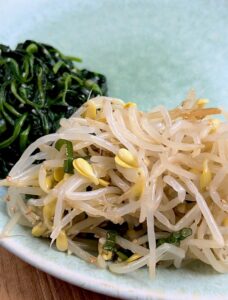
Cucumber
- Drain the drawn out water from the cucumbers and gently squeeze out as much moisture as you can using paper towels.
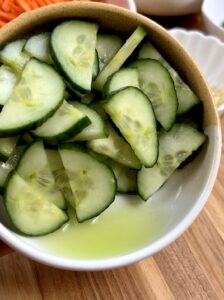
- Season with 1/2 tsp minced garlic, 1/2 tsp sesame oil, 1 tsp chopped green onion, and 1/2 tsp sesame seeds. Set aside.
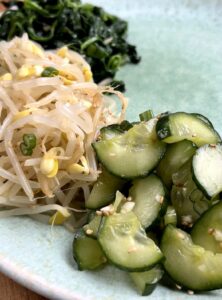
Zucchini
- Drain the drawn out water from the zucchini and gently squeeze out as much moisture as you can.
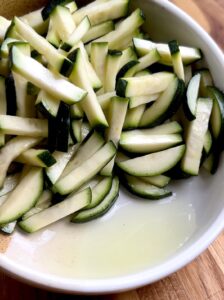
- Pan fry in a little vegetable oil over medium low heat. Add 1/2 tsp minced garlic, 1/2 tsp sesame oil, 1 tsp chopped green onion, and 1/2 tsp sesame seeds.
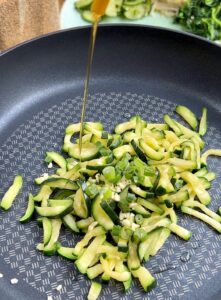
- Stir fry for 2-3 minutes then set aside. Keep the pan out- you will be using this same pan to cook the carrots and beef.
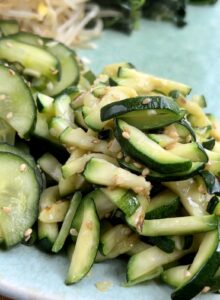
Carrot
- Drain the drawn out water from the carrots and squeeze out as much moisture as you can.
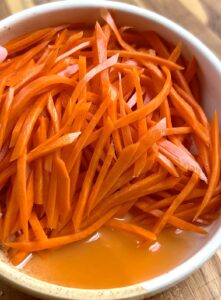
- Stir fry in a little vegetable oil for 2-3 minutes.
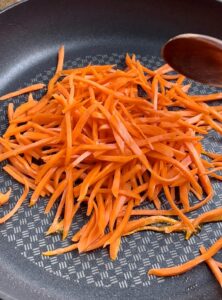
Beef (or mushroom for vegetarian)
- Pan fry the marinated beef in a little vegetable oil over medium heat.
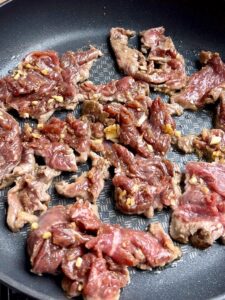
- Cook to your desired doneness then set aside.
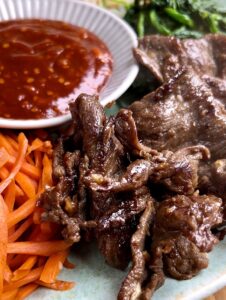
Assemble rice bowl
- Arrange the vegetables, beef, and 2-3 tbsp sauce on top of some rice.
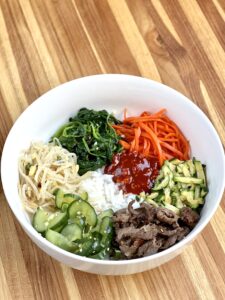
- Fry an egg and lay it right in the middle of the bowl.
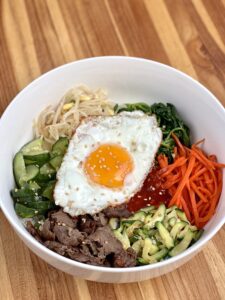
- Mix together and enjoy!
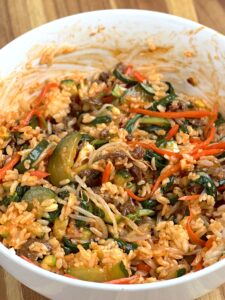
Nutrition information is automatically calculated, so should only be used as an approximation.
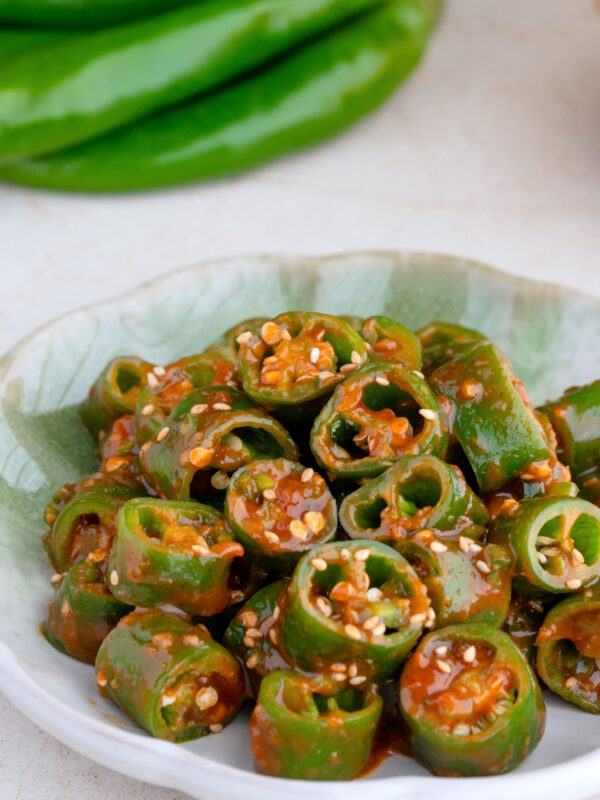
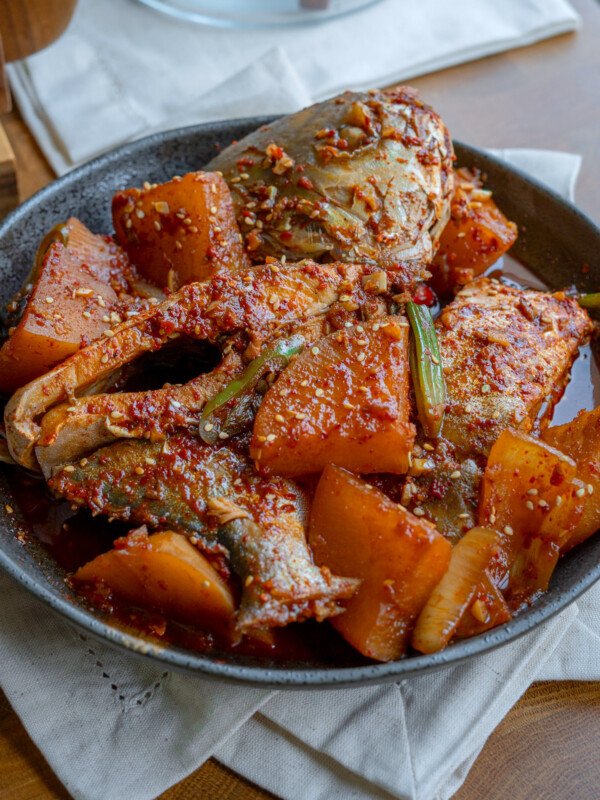
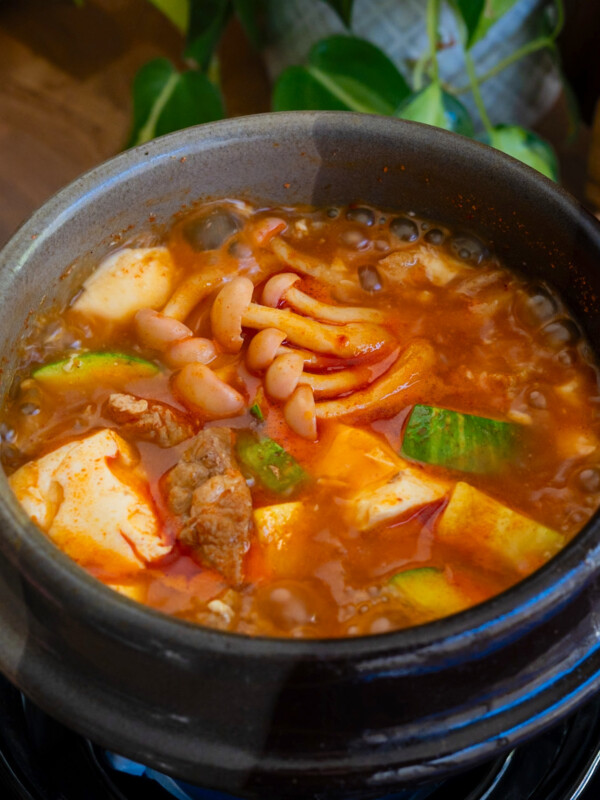
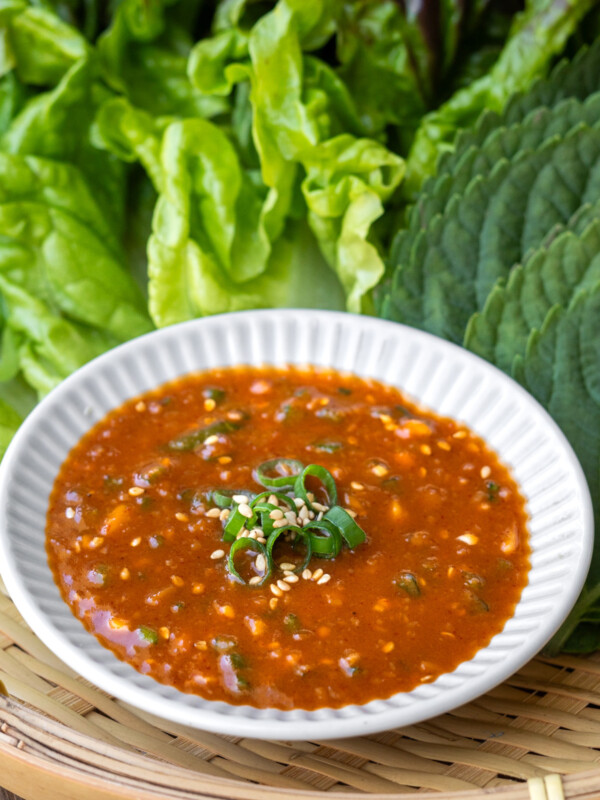







Love to use this bulgogi recipe on its own for something quick and easy. Please provide us with your ssamjang recipe you used to have on your insta!
Hola Stella! Esta es una de mis comidas favoritas y siempre pensé que era muy fácil de preparar y ahora después de mirar cada paso a paso me hace apreciar y agradecer tus recetas que compartes con nosotros, gracias por lo que no enseñas.
I love this recipe! I enjoy making making Bibimbap as a meal during the week. Thanks Stella for this detailed recipe!!
Love this recipe I’ve made it multiple times! Soo good
Love this recipe! I’ve been using it ever since this website went live
five stars <3
Hi, thank you for sharing the bibimbap sauce, the sauce is really good!
I love your recipe so much. All the flavors go so well together. The sauce for the Bibimbap is so good. That I always have it on hand on my fridge at all times. Your recipe is my go to recipe whenever I make Bibimbap.
Thank you so much for this recipe.
Love to use this bulgogi recipe on its own for something quick and easy. Please provide us with your ssamjang recipe you used to have on your insta!
Hi Stella, Can I just say that this Bibimbap recipe is truly delicious. I was introduced to Korean content by my now 13 year old daughter and naturally the food became too hard to ignore. My son who is a picky eater because of ASD absolutely devours this food. 5 stars and a thumbs up from our family.